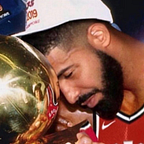Understanding Classical Chart Patterns Series — H&S
If you are new to Technical Analysis and read a few posts about it, you would have encountered the terms “Cup and Handle”, “Head and Shoulders”, “Double Tops” etc — but what do they really tell us? Does it forecast future price action? Does it tell where the price can go?
In this write-up, I’ll be discussing in detail what happens in a Head and Shoulders pattern.
Head and Shoulders Pattern has a left peak forming the left shoulder. A right peak forming the right shoulder and a middle peak forming the head.
Some Technical Analysis books call this as a Head and Shoulders Top for the reason that its found most of the time at the top of your chart — where the price is extended and your indicators are at its extreme levels.
As price surges higher, profit taking takes place. And the pivot to the first downward move has now created a potential left shoulder (left blue circle).
After the first pullback or the first red arrow, some people in the market will think that its a TEMPORARY decline in price. So the price action invites NEW BUYERS, and previous buyers to ADD MORE shares. This now pushes the price higher (the second green arrow).
But there comes a time in a chart that as price goes higher, participants will question as to why the stock can’t go any further. This is evident in the price chart when the candles are being rejected and shows some upper wicks.
Due to the price rejections, it now causes fear to the previous buyers making them sell their positions. This creates a “panic selling” making the price go down (the second red arrow). The pivot from the second green arrow to the second red arrow creates your potential head in the pattern (second blue circle)
After seeing a sharp drop in price, there will be people who will think that its a temporary decline in price. There will be people as well who thinks that the price might resume its trend. This then creates a mini-rally to the up side (the third green arrow).
But these new buyers — with their hopes that the uptrend might resume, is at the wrong side of the market. They will soon figure out that the up move will be taken advantage by the sellers for the fact that its a chance for them to sell their shares at a higher price. This now creates the last move of the pattern — another sharp drop in price (the third red arrow).
The pivot between your third green arrow to your third red arrow forms your right shoulder (third blue circle).
You now have a head and shoulders on your chart. The only important factor left is for price action to break the neckline which is the dotted line. A break of the neckline will tell you that the trend and sentiment has COMPLETELY changed.
A few examples:
This is the previous price action of $MBT and $FLI . The dashed line calculates the initial price target of the Head And Shoulders pattern. Measure the peak of the head to the bottom of the neckline and place it on breakdown point.
